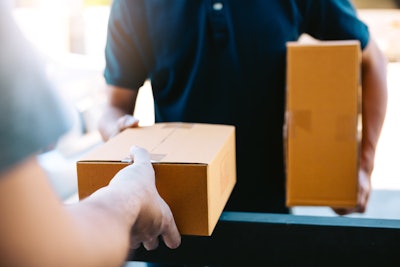
Back in 1905, Albert Einstein argued that how you experience time is always in relation to something else; there’s no “absolute” frame of reference. While Einstein’s theory of relativity was more about the speed of spacetime than delivery windows, his hypothesis has proven to be truer than ever for e-commerce in 2022.
Just until recently, the traditional trifecta of consumer satisfaction was always considered to be free shipping, price, and good reviews; outside of food and grocery, it wasn’t imperative for consumers to receive their rainboots or mascara or Playstation any faster than the standard five-day shipping window. Even when Amazon rolled out its next-day shipping initiative in 2019, many retail experts were skeptical about the importance of speed.
But that has all changed now. Since the onset of the pandemic, a growing number of consumers now consider fast delivery to be a critical offering across all categories. Yet there’s a gap: between what consumers currently expect in terms of delivery speeds, what retailers themselves know is coming, and the plans they have in place.
Consumers now expect two-day delivery, but brands struggle to keep up
In a recent Fabric survey of 200 brands and 500 consumers, it was evident that retailers and consumers fail to see eye-to-eye about speed of delivery. In fact, 61% of consumers define “fast delivery” as next-day or faster – among them, 44% consider same-day to be “fast.” By contrast, only 23% of retailers define “fast delivery” as such, with 77% instead defining it as two days or slower.
Not only is two-day delivery not considered particularly “fast” by consumers; it’s actually the bare minimum that they now expect from brands. 92% of consumers expect retailers to provide free two-day shipping, with 58% considering it to be very important or non-negotiable.
Yet 40% of brands are currently not offering two-day shipping at all (paid or free), and among them, nearly half have no plans in place to roll out the offering. This warrants a bell of alarm given that it’s already the consumer standard – and people expect it for free, to boot.
Same-day delivery is right around the corner as the new consumer standard
The pace is already quickening; while same-day delivery was considered a premium service that not even all grocery retailers managed to provide, it’s now on the horizon as the new delivery standard across all verticals.
Among the consumers in Fabric’s survey, 81% are more likely to purchase an item if they can get it delivered the same day. And in what should be heartening news to beleaguered brands, 67% of consumers want same-day delivery so much that they’re willing to pay for it. According to Research and Markets, the same-day delivery market in the U.S. is poised to grow by $9.82 billion over the next four years.
If two-day shipping is already a stretch for most brands, it should come as no surprise that same-day is simply beyond the realm of what’s currently possible for anyone other than Amazon. But what’s concerning is that 64% of retailers and brands do not consider same-day shipping to be a requirement to stay competitive. It’s one thing to not offer a service because it’s operationally and financially difficult to do so; it’s another thing entirely to be unaware that the service is unimportant.
It’s time for brands to prioritize fast deliveries as a business imperative
Brands are aware that fast delivery will be important in the future – 74% believe that next-day delivery will be a requirement to stay competitive within two years and 63% even believe that same-day delivery will be imperative.
But brands’ fundamental misunderstanding seems to be about when offering fast delivery will be of critical importance. For consumers, it’s not a pie-in-the-sky, nice-to-have-one-day preference; it’s a service they expect today and if they can’t get it from one brand, they’ll shop from another that provides it. It’s a tall order for brands, but nothing less than the survival of their business is at stake.
A distributed fulfillment strategy is the key to faster deliveries (that are profitable, at scale)
If speed of delivery is relative for brands and consumers, it’s only because within the infrastructure of current supply chains, providing fast shipping is an enormous operational, strategic, and financial challenge. Most brands rely on traditional e-commerce fulfillment methods that leverage centralized warehouses in rural areas that were meant to capitalize on the economies of scale, but now incur slow and costly shipping times. Within this paradigm, even two-day shipping is a stretch; executing same-day shipping is harder than deciphering e=Mc2.
That doesn’t mean that brands need to walk away from the existing fulfillment strategy and infrastructures they’ve spent years building and millions (or billions) investing in, but it is time for them to augment their operations with a robust distributed fulfillment strategy.
While some brands (but not all) have a highly valuable asset of ideally located stores that mitigate the last mile and enable fast deliveries, leveraging in-store fulfillment should only be considered to be a short-term tactic at best. In-store fulfillment is riddled with problems and inefficiencies: pickers compete with in-store customers and detract from the in-store shopping experience; it relies on manual labor which is scarce and expensive; it’s prone to inaccuracies.
Brands should seek long-term fulfillment partners who can strategically distribute their inventory in close proximity to their customers, which dramatically reduces delivery distances and costs. It also has the added benefit of drastically reducing carbon emissions. A distributed fulfillment strategy that leverages robotic automation can even promise on-demand deliveries at unit economics that are better than standard three to five-day shipping.
Einstein once said, “We cannot solve our problems with the same thinking we used when we created them.” The same is true of fulfillment strategies. In this new age of e-commerce and rapidly evolving consumer expectations, it’s time for brands to take an entirely new approach to supply chains and future-proof their fulfillment strategies, from click to delivery.



















